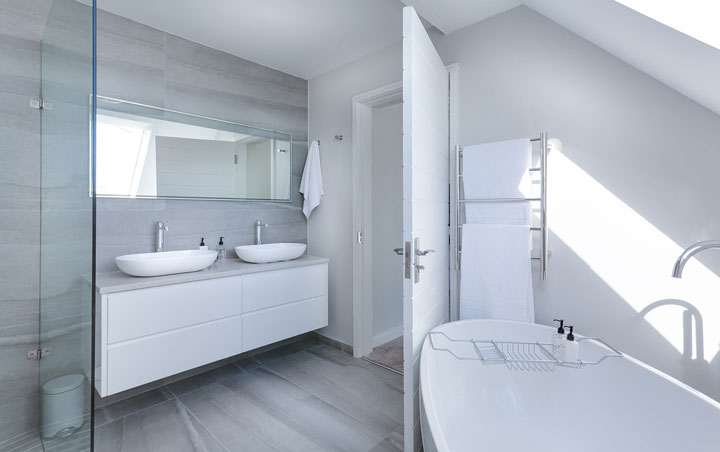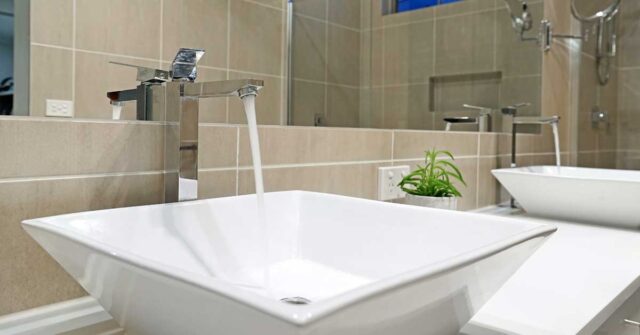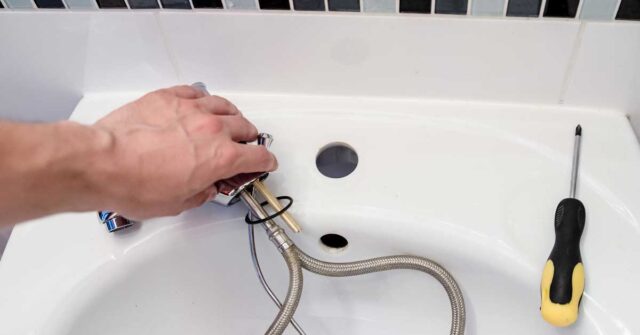Bathroom renovations can breathe new life into one of the most-used spaces in your home.
But let’s face it – renovations aren’t cheap, and not everyone has cash on hand to cover the costs. This is where financing options step in, offering ways to pay for your upgrade over time.
In this guide, we’ll explore the various financing options, weigh their benefits and drawbacks, and help you make an informed decision.

Understanding Bathroom Renovation Financing
Before diving into the specifics, it’s essential to understand what bathroom renovation financing is and why it might be right for you.
Financing allows homeowners to tackle renovation projects without upfront costs, spreading payments over months or years.
With numerous options available, it’s important to identify what suits your budget and goals best.
What Is Bathroom Renovation Financing?
In simple terms, bathroom renovation financing is borrowing money to fund your project.
Whether it’s through personal loans, home equity products, or specialized renovation loans, financing gives you the flexibility to pay as you go.
The aim is to turn your bathroom aspirations into reality without causing immediate financial strain.
Why Consider Financing for Your Bathroom Renovation?
Financing offers a lifeline when you want to remodel but lack the funds to do it upfront. It can help you:
- Achieve a higher-quality renovation without compromising due to budget constraints.
- Spread costs into manageable monthly payments.
- Improve the value and functionality of your home without waiting years to save up.
It’s not just about affordability – it’s also about making timely upgrades that enhance your lifestyle and home value.
Common Costs Associated with Bathroom Renovations
Bathroom renovations can range from minor updates to full-scale remodels. Here’s a breakdown of typical expenses in Australia:
- Fixtures and fittings: Expect to spend $1,000 to $5,000 for items like sinks, toilets, and bathtubs.
- Tiling and flooring: Quality materials and labour can cost $3,000 to $10,000.
- Plumbing and electrical: Updating pipes or wiring often adds $1,500 to $5,000.
- Labour: Hiring professionals typically costs $7,000 to $15,000 for a mid-range renovation.
Understanding these costs can help you decide how much financing you may need.

Types of Bathroom Renovation Financing Options
When it comes to financing your bathroom remodel, the choices are many. Each option has its own benefits and challenges, so understanding the details can make all the difference.
Personal Loans
Personal loans are one of the most straightforward ways to finance a bathroom renovation. These unsecured loans don’t require collateral and usually have fixed interest rates.
Pros of Using a Personal Loan
- No need to put your home at risk as collateral.
- Quick approval process for most borrowers.
- Fixed interest rates mean predictable monthly payments.
Cons of Using a Personal Loan
- Higher interest rates compared to secured loans.
- Loan limits may not cover extensive renovations.
- Repayment periods may be shorter, increasing monthly obligations.
Home Equity Loans and Lines of Credit
If you’ve built up equity in your home, you can tap into it to fund your renovation.
A home equity loan gives you a lump sum, while a home equity line of credit (HELOC) allows you to withdraw funds as needed.

Advantages of Home Equity Financing
- Lower interest rates compared to unsecured loans.
- Large loan amounts are often available.
- Repayment terms can stretch over decades, reducing monthly payments.
Disadvantages of Home Equity Financing
- Your home serves as collateral, increasing the risk of foreclosure if payments are missed.
- Application and approval processes can take longer.
- Market fluctuations may affect your home’s equity value.
Credit Cards
Credit cards are a flexible option for smaller renovation costs but should be used cautiously due to high interest rates.
Benefits of Using Credit Cards for Renovations
- Convenient for smaller purchases or emergency expenses.
- Potential rewards or cashback for spending.
- Some cards offer promotional interest-free periods.
Risks of Financing with Credit Cards
- High interest rates can lead to significant debt if not paid off quickly.
- Limited credit limits may not cover full renovation costs.
- Can negatively affect your credit score if balances remain high.
Renovation-Specific Financing Plans
Many companies, including renovation specialists, offer dedicated financing plans tailored for home improvement projects. These plans often have competitive rates and flexible terms.
How Renovation-Specific Financing Works
- Loan amounts are often tied to project estimates.
- Interest rates may be lower than general-purpose loans.
- Repayment schedules are customised to fit your project timeline.
Pros and Cons of Renovation Financing Plans
The pros include structured terms designed for renovation projects and competitive rates. The downside? Limited flexibility if your plans change mid-project.
Government Assistance Programs
In Australia, some government programs provide financial incentives for home improvement projects, especially if they include eco-friendly upgrades.

Available Grants and Incentives in Australia
- Rebates for energy-efficient installations.
- Low-interest loans for sustainable housing improvements.
Eligibility and Application Process
Eligibility criteria vary by program but typically include income thresholds, project types, and the use of licensed professionals. Research your options carefully to see what applies to your situation.
Evaluating the Pros and Cons of Financing Options
Every financing option has its advantages and drawbacks. A clear understanding of these can help you decide what works best for your financial situation and renovation goals.
Key Benefits of Financing Your Bathroom Renovation
- Access to funds allows you to complete the project without delay.
- Spread-out payments make managing costs more feasible.
- Potential increase in home value can offset financing costs in the long run.
Financing makes it easier to opt for quality materials and skilled professionals, ensuring a better outcome for your renovation project.
Potential Drawbacks and Risks
- Interest payments increase the overall cost of the renovation.
- Taking on debt requires careful financial planning.
- Missed payments can harm your credit score and lead to financial stress.
Weigh these factors carefully to ensure the benefits outweigh the risks in your specific circumstances.
Balancing Costs and Value in Your Decision
It’s important to consider how much value the renovation will add to your home versus the cost of financing.
A modest upgrade might not justify a large loan, while a high-end renovation in a premium location could yield significant returns on investment.
As a rule of thumb, focus on improvements that enhance functionality and appeal while staying within a budget you can comfortably manage.
How to Choose the Right Financing Option
Choosing the best financing option requires assessing your financial health and understanding the terms associated with each choice. Here’s a step-by-step approach to help you decide.
Assessing Your Financial Situation
Before applying for financing, take a hard look at your finances. Calculate your monthly income, current expenses, and existing debt obligations. Ask yourself:
- Can I afford additional monthly payments?
- How much debt am I comfortable taking on?
- Do I have an emergency fund in place?
Honest answers will guide you toward options that align with your financial reality.

Comparing Interest Rates and Terms
Interest rates can vary widely between financing products. A lower interest rate means lower overall costs, but don’t overlook other factors like repayment terms, fees, and penalties.
Compare options from multiple lenders to find the best deal.
Understanding Repayment Plans
Repayment terms are just as important as interest rates. Short-term loans may have higher monthly payments but save on interest in the long run.
Longer terms reduce monthly costs but increase the total amount paid. Choose a plan that fits your cash flow without straining your budget.
Consulting Financial Advisors or Experts
If you’re unsure about your options, speaking with a financial advisor can provide clarity.
They can help you evaluate loan offers, calculate repayment scenarios, and determine which choice is best for your goals.

Tips for Managing Renovation Financing
Once you’ve secured financing, it’s crucial to manage your project and payments wisely. These tips can help you stay on track.
Creating a Realistic Budget
Start by outlining every expense associated with your renovation, from materials to labour. Leave room for unexpected costs – because they will happen.
Sticking to a well-planned budget reduces the risk of overspending and keeps your financing under control.
Tracking Expenses During the Renovation
Use apps or spreadsheets to monitor your spending. Regularly compare your actual expenses against your budget to identify and address any discrepancies early on.
Paying Off Your Financing Early
If your loan terms allow it, making extra payments can reduce interest costs and shorten the repayment period. Even small additional payments can make a significant difference over time.
Avoiding Common Financial Pitfalls
- Don’t borrow more than you need, even if you qualify for a larger amount.
- Avoid using high-interest credit for unexpected expenses—plan for contingencies instead.
- Stay disciplined with your repayment plan to avoid penalties and long-term debt.
FAQs About Bathroom Renovation Financing
Here are answers to some common questions homeowners have about financing their renovations.

Is Financing a Bathroom Renovation Worth It?
It depends on your goals and financial situation. Financing is worthwhile if the renovation adds value to your home, improves your quality of life, or addresses essential repairs.
However, avoid financing if the monthly payments would stretch your budget too thin.
What Happens If I Default on My Loan?
Defaulting on a loan can have serious consequences, including damage to your credit score and potential legal action.
Secured loans may even result in the loss of your collateral, such as your home. Communicate with your lender immediately if you’re struggling to make payments to explore alternative arrangements.
How Do I Know If I Qualify for Financing?
Eligibility varies by lender and loan type. Most lenders consider factors like your credit score, income, employment history, and existing debt.
Some financing options, such as government programs, may also have specific requirements like income limits or project criteria.
Conclusion: Making the Best Financial Decision
Financing a bathroom renovation can be a smart way to achieve your dream space without waiting years to save up.
By understanding your options, evaluating the pros and cons, and managing your finances wisely, you can make a decision that aligns with your needs and goals.

Summary of Key Points
- Various financing options exist, from personal loans to home equity products.
- Each option has its own set of benefits and challenges to consider.
- Careful planning and budgeting are essential for a successful renovation.
Final Thoughts on Bathroom Renovation Financing
A well-renovated bathroom not only enhances your home but can also improve your everyday life.
Financing can help you achieve this, provided you approach it with careful thought and planning. Research, compare, and choose wisely.
How NuDesign Bathrooms Can Help You
At NuDesign Bathrooms, we specialise in bringing your vision to life. Whether you’re exploring financing options or need expert advice on your renovation, our team is here to guide you.
Reach out to us today to discuss how we can help create the bathroom you’ve always wanted.





